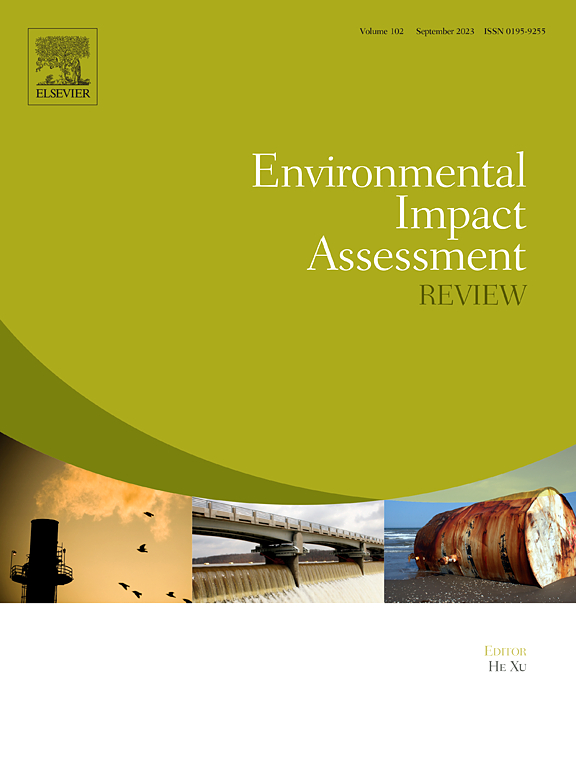A critical appraisal of 40 years of avian collision risk modelling: How have we got here and where do we go next?
IF 9.8
1区 社会学
Q1 ENVIRONMENTAL STUDIES
引用次数: 0
Abstract
Collision risk models (CRMs) form a key part of the Environmental Impact Assessment (EIA) process for wind farms. It is 40 years since the first CRM was published. We take a critical approach to reviewing the CRMs available in the peer-reviewed and grey literature, with a view to better understanding the current challenges, and how these may be overcome. In total, we identified 52 models, which include 75 input parameters amongst them. There has been a tendency for models to become more complex over time, incorporating more input parameters with a view to improving biological realism. However, many of these models have not been applied within the EIA process. Consequently, despite advances in modelling and the types of data available to inform models, few of these advances have been implemented in regulatory processes. As few models have been validated, it would be beneficial to make use of data from any existing or planned post construction monitoring campaigns to do so, where possible. Additionally, we recommend for sensitivity and benchmarking analysis to compare results from established models for any new CRM proposed. As the industry continues to expand, it is important that stakeholders have confidence in any approach used to assess collision risk. This will likely require close collaboration and careful discussion between all stakeholders.
对 40 年鸟类碰撞风险建模的批判性评估:我们是如何走到这一步的?
碰撞风险模型 (CRM) 是风力发电场环境影响评估 (EIA) 流程的重要组成部分。自第一个碰撞风险模型发布以来,已经过去了 40 年。我们采用批判性方法对同行评议和灰色文献中的碰撞风险模型进行了审查,以期更好地了解当前面临的挑战以及如何克服这些挑战。我们总共确定了 52 个模型,其中包括 75 个输入参数。随着时间的推移,模型有变得越来越复杂的趋势,纳入了更多的输入参数,以期提高生物的真实性。然而,这些模型中有许多并没有在环境影响评估过程中应用。因此,尽管在建模和为模型提供数据的类型方面取得了进展,但这些进展很少被应用到监管过程中。由于很少有模型经过验证,因此在可能的情况下,利用现有的或计划中的施工后监测活动中的数据进行验证将是有益的。此外,我们建议进行敏感性和基准分析,以比较任何新提出的 CRM 既有模型的结果。随着行业的不断发展,利益相关者必须对任何用于评估碰撞风险的方法有信心。这可能需要所有利益相关者之间的密切合作和仔细讨论。
本文章由计算机程序翻译,如有差异,请以英文原文为准。
求助全文
约1分钟内获得全文
求助全文
来源期刊

Environmental Impact Assessment Review
ENVIRONMENTAL STUDIES-
CiteScore
12.60
自引率
10.10%
发文量
200
审稿时长
33 days
期刊介绍:
Environmental Impact Assessment Review is an interdisciplinary journal that serves a global audience of practitioners, policymakers, and academics involved in assessing the environmental impact of policies, projects, processes, and products. The journal focuses on innovative theory and practice in environmental impact assessment (EIA). Papers are expected to present innovative ideas, be topical, and coherent. The journal emphasizes concepts, methods, techniques, approaches, and systems related to EIA theory and practice.
 求助内容:
求助内容: 应助结果提醒方式:
应助结果提醒方式:


